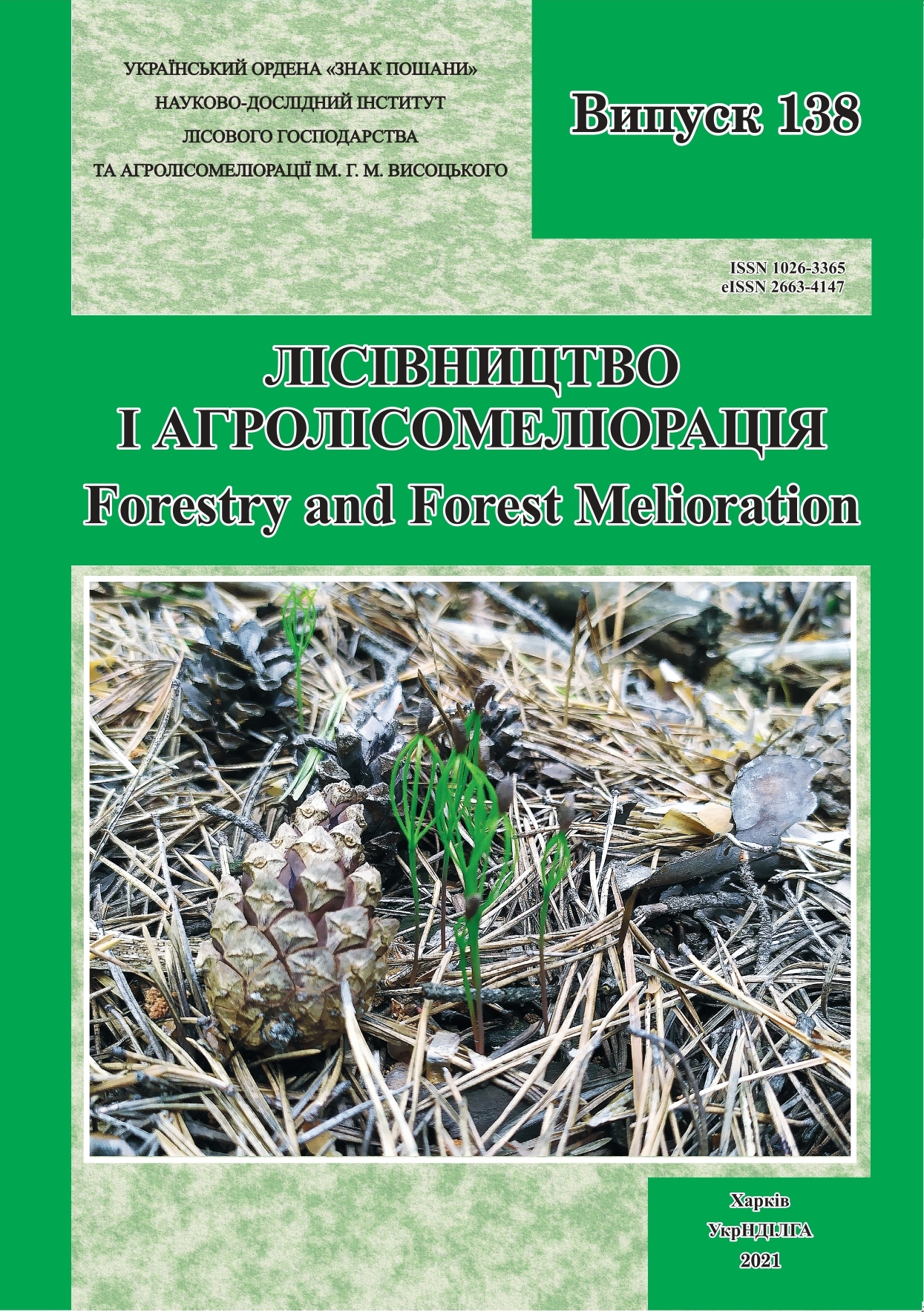Анотація
Робота містить аналіз стратегії диференційованої охорони популяцій раритетних видів лісової флори України та їхніх локалітетів на основі дослідження еколого-фітоценотичних особливостей і причин раритетності, моніторингу чисельності та поширення в певних регіонах. На ділянках моніторингу лісів 1-го рівня (280 ділянок) у межах Західно- та Центральнополіського округу Поліської лісогосподарської області України досліджено стан популяцій раритетних видів рослин (рясність-покриття та участь у складі рослинного покриву), проаналізовано їхню приуроченість до певних деревостанів і типів лісу та розповсюдження в лісових фітоценозах. Визначено регіональні особливості причин раритетності видів лісової флори й запропоновано заходи щодо їхньої охорони, які охоплюють регулярне проведення моніторингових спостережень (раз
на 5 років), виділення особливо захисних лісових ділянок або особливо цінних для збереження територій (ОЦЗ 1) під час FSC сертифікації лісогосподарських підприємств на ділянках із життєздатними популяціями раритетних видів та перегляд регіонального охоронного статусу окремих видів.

Ця робота ліцензується відповідно до Creative Commons Attribution 4.0 International License.
